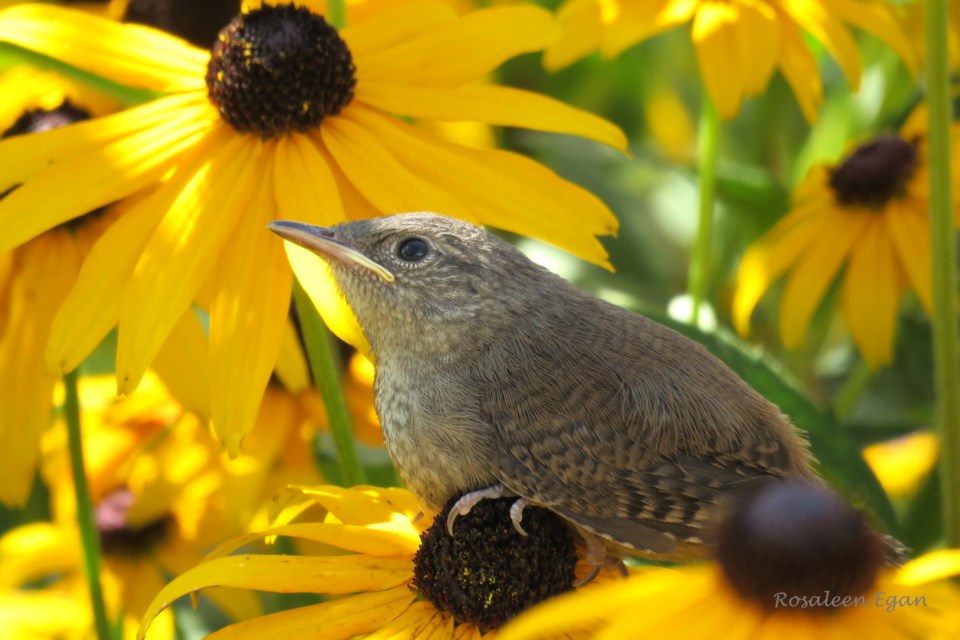As is typical of this little bird, I heard it before I could see it. I first saw the adult House Wren on the fence. The baby was sitting on a Black-eyed Susan flower. It was so small and well camouflaged by the shadows and the centres of flowers my camera had a hard time focusing on the bird rather than the surrounding flowers.
House Wrens have the distinction of having one of the largest ranges of any songbird on this side of the Atlantic. Allaboutbirds.org says, “It breeds from Canada through the West Indies and Central America, southward to the southernmost point of South America.”
One tends to think smallness equals cuteness. This can be the case, of course, but this little bird counters that stereotype when it forces its will on other birds. “Wrens will harass and peck at much larger birds, sometimes dragging eggs and young out of a nest site they want – even occasionally killing adult birds,” says allaboutbirds.org
Regardless of this information, when I saw the young bird sitting on and among the flowers, it seemed poetic - a lovely moment in time.
Further to my enjoyment, I was grateful to see the adult had caught an earwig. I am fairly tolerant of bugs and encourage biodiversity. I do, nonetheless, have quite a dislike of earwigs, particularly when I find them in my teapot or dish rag. In any case, feeding birds seems like a good use for them.
Besides earwigs, House Wrens eat such things as beetles, grasshoppers, crickets, caterpillars, flies and moths. It also eats many spiders, plus some millipedes and snails, according to Audubon.com.
Audubon.com also says that House Wrens nest in boxes and other enclosed spaces that can include ‘flowerpots, parked cars, shoes, drainpipes”, and so forth. I had a wren check out my folded patio umbrella once.
Mites and other parasites in their homes are a problem for House Wrens. Allaboutbirds.com suggests it may be the reason wrens often add spider egg sacs into the materials with which they build their nests. The site continues, “In lab studies, once the spiders hatched, they helped the wrens by devouring the nest parasites.”
I muse if this is perhaps a wily move by House Wrens that leads to taking care of two things at once. The hatched spiders get rid of the parasites, and then the wrens eat the spiders. It’s sort of like the wrens doing the dishes before eating a meal.
Anyway, these wrens go through some trouble to create a home. According to Audubon.com the male will build model homes using twigs and show them to a female. She picks one and finishes the nest by adding plant fibres, grass, weeds, animal hair, and feathers.
This does not mean, however, that the female will be loyal. Audubon.com says she may choose to move to another male's territory and nest again, leaving the first male to look after the young from the first brood. Males may also have more than one mate.
In this case, no matter the circumstances, I am happy two House Wrens found a way for the species to continue by producing this young bird found among the flowers.
I share experiences of bird visitors to this property with readers every couple of weeks. Until next time, keep your eye on the sky, and look for birds that may come by.
Rosaleen Egan is a freelance journalist, a storyteller, and a playwright. She blogs on her website rosiewrites.com.



